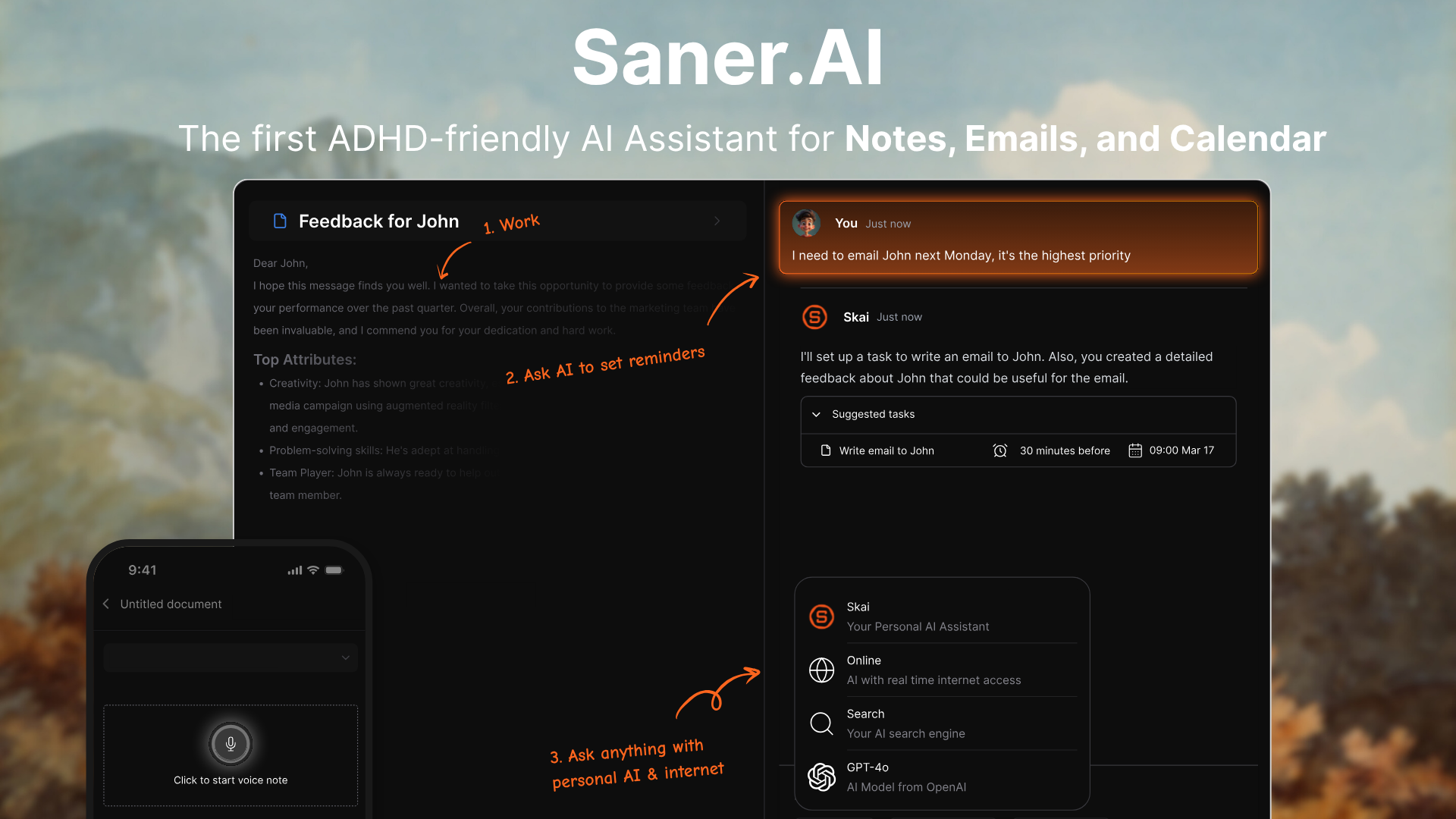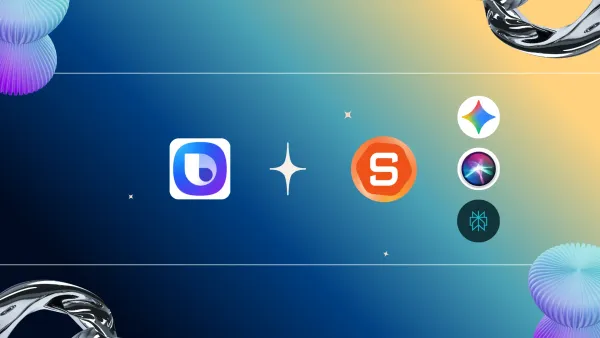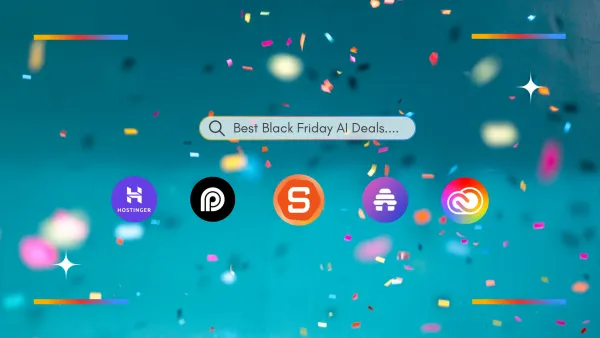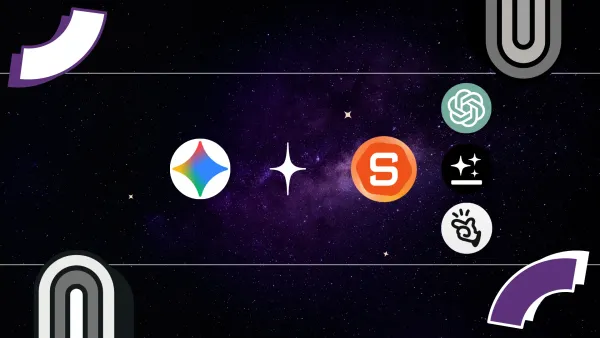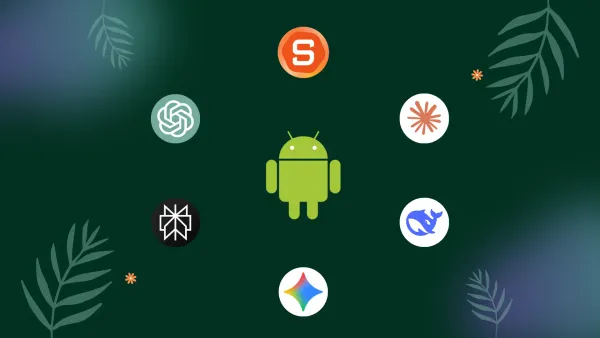Work Apps: We Tested The Best 10 Apps For You
The Best Work Apps in 2025 are Saner.AI, ChatGPT, Canva, Calendly, Google Sheets, v0, Superhuman, Fathom, Manus, and Napkin
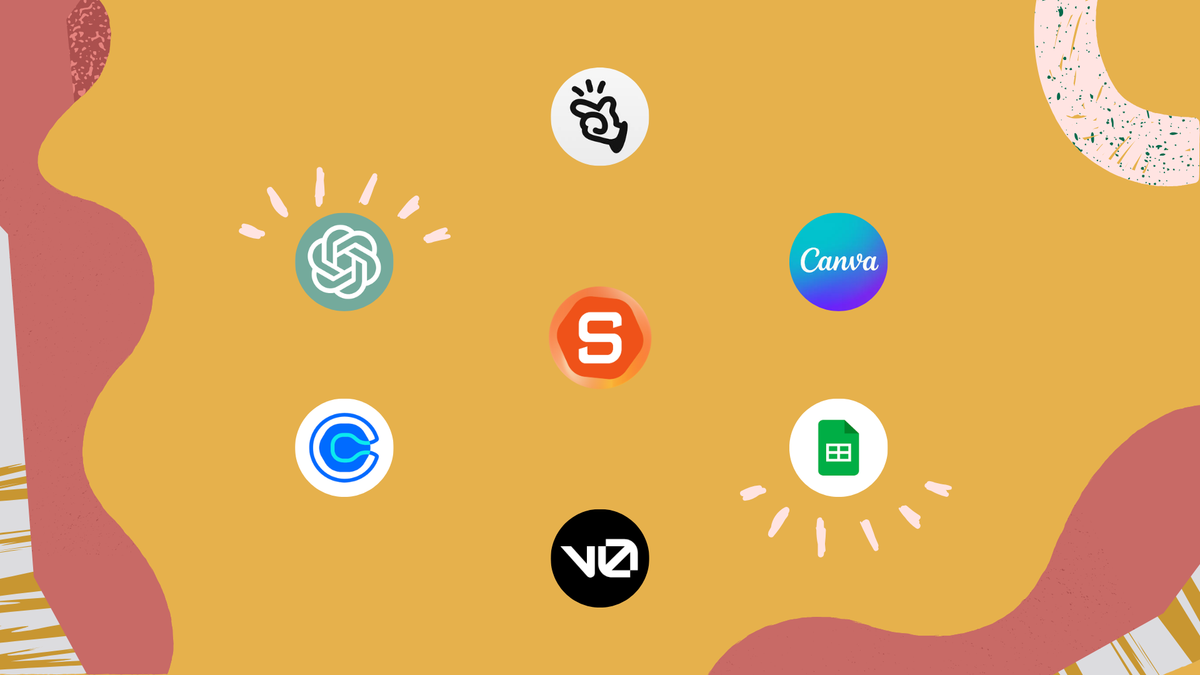
Best Work Apps in 2025: Tools That Actually Help You Get More Done
Feeling buried under tabs, tools, and to-do lists?
You’re not alone. Between Slack pings, overflowing inboxes, and juggling 10 apps just to get through your day, work can feel like more work than ever.
That’s why this guide cuts through the noise to help you find the best work apps that actually help you work better.
Whether you're a solopreneur, part of a team, or navigating ADHD challenges, you’ll walk away with tools that fit your workflow - and your brain.
What Are “Work Apps” (And Why They Matter in 2025)?
Work apps are digital tools designed to help you plan, collaborate, communicate, and execute your day-to-day tasks more efficiently. Think: to-do lists, calendars, AI assistants, meeting recorders, and project managers - all working together to reduce mental load and increase productivity.
In 2025, choosing the right apps isn’t just about features. It’s about:
- ⚡ Avoiding context switching
- 🧠 Reducing decision fatigue
- 🤖 Taking advantage of smart AI assistants
- 🔗 Seamlessly integrating with your other tools
The old way of working - spreadsheets, email chains, and scattered notes - is being replaced by AI-powered, cross-platform workspaces that do the thinking (and organizing) for you.
What Makes a Great Work App?
Before jumping into the list, let’s look at the traits that separate good work apps from great ones:
✅ Ease of Use
- You shouldn’t need a manual. The best apps feel intuitive from day one.
🤝 Collaboration Features
- Whether you're working solo or with a team, real-time sync, commenting, and sharing are essential.
- Smart apps now offer suggestions, automation, and proactive planning - so you spend less time managing work and more time doing it.
🔌 Integrations
- Good work apps play nice with your existing stack: email, calendar, notes, Slack, and more.
📱 Cross-Device Sync
- Your tasks should follow you—whether you're on your phone, laptop, or tablet.
What are the Best Work Apps ?
The Best Work Apps in 2025 are Saner.AI, ChatGPT, Canva, Calendly, Google Sheets, v0, Superhuman, Fathom, Manus, and Napkin
🧰 Summary Table: Best Work Apps in 2025
| App / Tool | Category | Key Features & Benefits | Highlights |
|---|---|---|---|
| Saner.AI | AI Personal Assistant | AI assistant unifying notes, tasks, emails, calendars; auto-structures your inputs; distraction-minimal UI | Connects notes, tasks, and reminders automatically; designed for ADHD-friendly workflows |
| ChatGPT | AI Chatbot | Flexible writing, planning, summarizing across workflows | Widely used for drafting, summarizing, ideation |
| Canva | Creative Productivity | Visual Suite 2.0 with Canva Sheets, Magic Charts, no-code interactivity, AI tools for writing and images | Powerful design + AI workspace; +230M users and $3B+ annual revenue |
| Calendly | Scheduling | Fast, easy meeting scheduling | Popular for reducing back-and-forth in meeting setup |
| Google Sheets | Spreadsheets | Universal spreadsheet tool | Core productivity staple; widely integrated |
| v0 | AI App Builder | Builds front-end UIs or apps from natural-language prompts; auto-plans, debugs, and deploys | "From idea to deployed app in a single prompt" |
| Superhuman | AI Email Productivity | Instant Replies, Split Inbox, Smart Follow-Ups; saves 4+ hours/week; processes 72% more email/hour | Acquired by Grammarly; used by power users for fast inbox management |
| Fathom | Meeting Recorder & Summary | AI-generated summaries from meetings; integrates with Notion, Salesforce, etc. | Used to reduce manual meeting note-taking and follow-up |
| Manus | AI Agents | Autonomous AI agents that complete multi-step tasks for you | Emerging in AI agent space; aims for proactive execution |
| Napkin.ai | Visualization | Turn text to visualization | Designed for creative professionals |
1. Saner.AI - AI Assistant
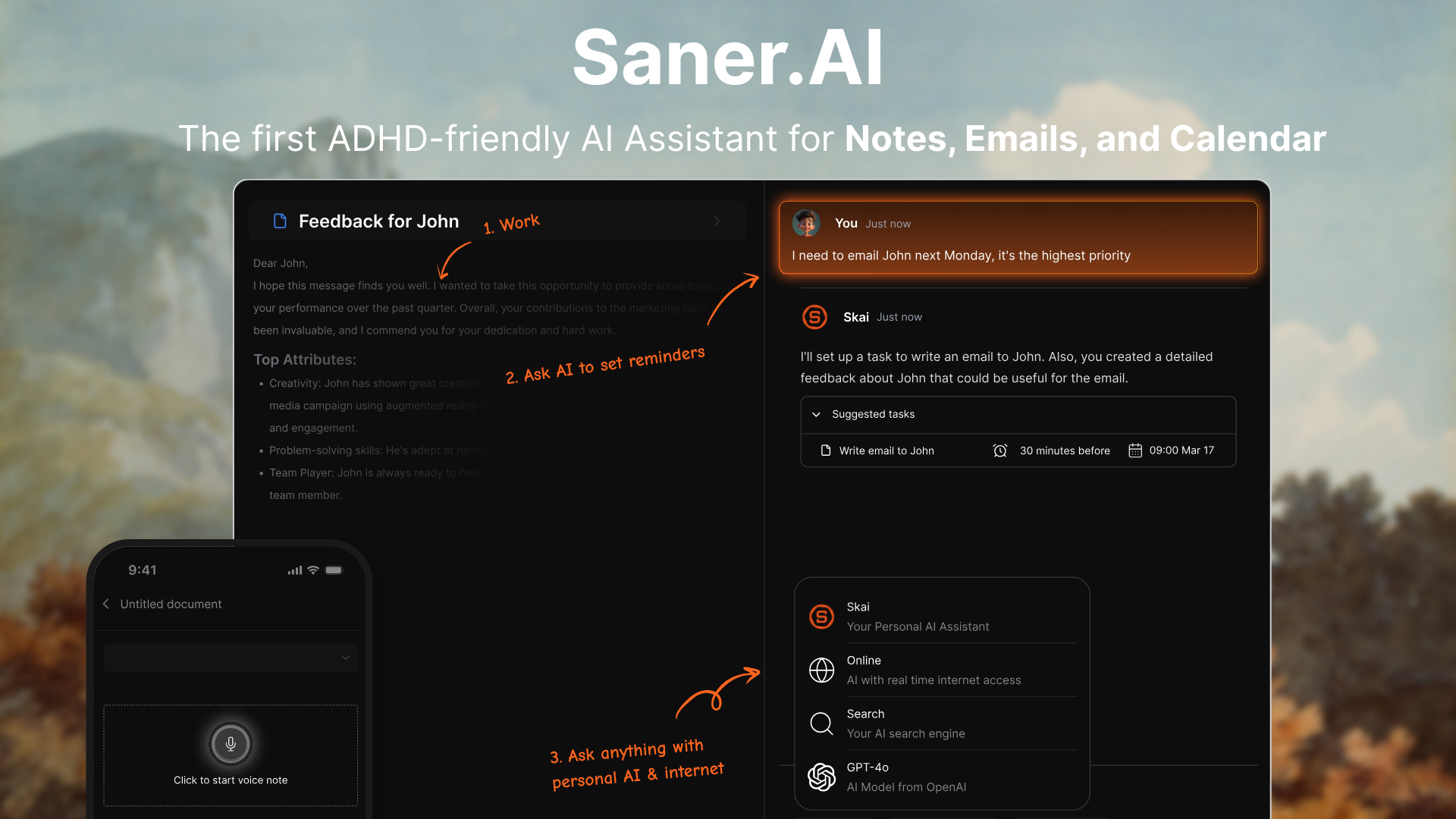
Saner.AI is an AI productivity assistant designed to reduce mental overload.
Instead of jumping between your notes app, to-do list, email, and calendar, Saner combines everything into one interface - with a built-in AI that helps you make sense of it all. It’s especially helpful for professionals and ADHD-prone users who often feel scattered.
Key features
- AI Daily Planner: At the start of your day, AI helps organize and prioritize what to focus on
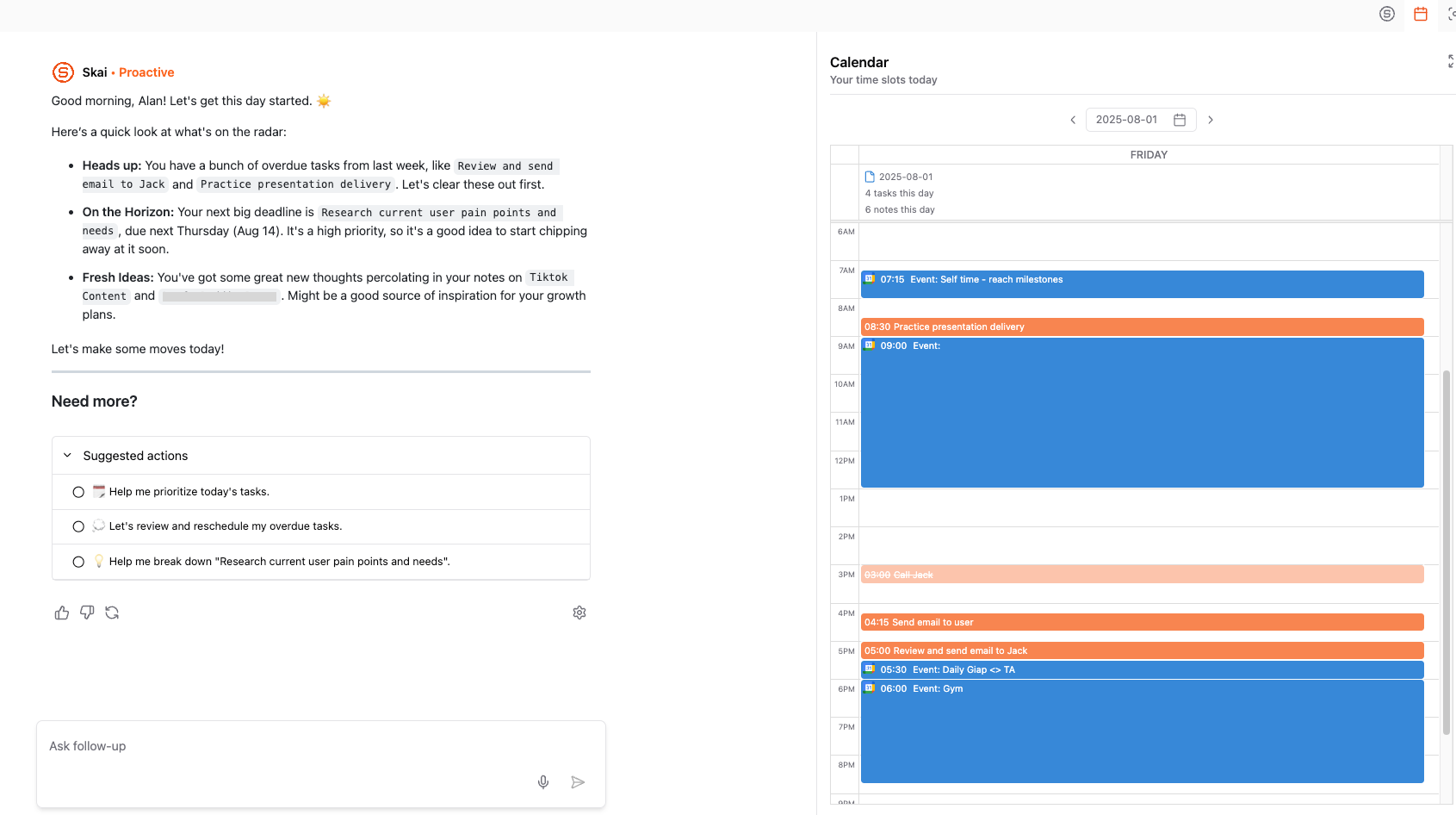
- AI Search: Ask questions about anything you’ve written, saved, or emailed - it will find and synthesize answers
- Task Extraction: Detects tasks from your emails, notes, and documents and turns them into reminders automatically
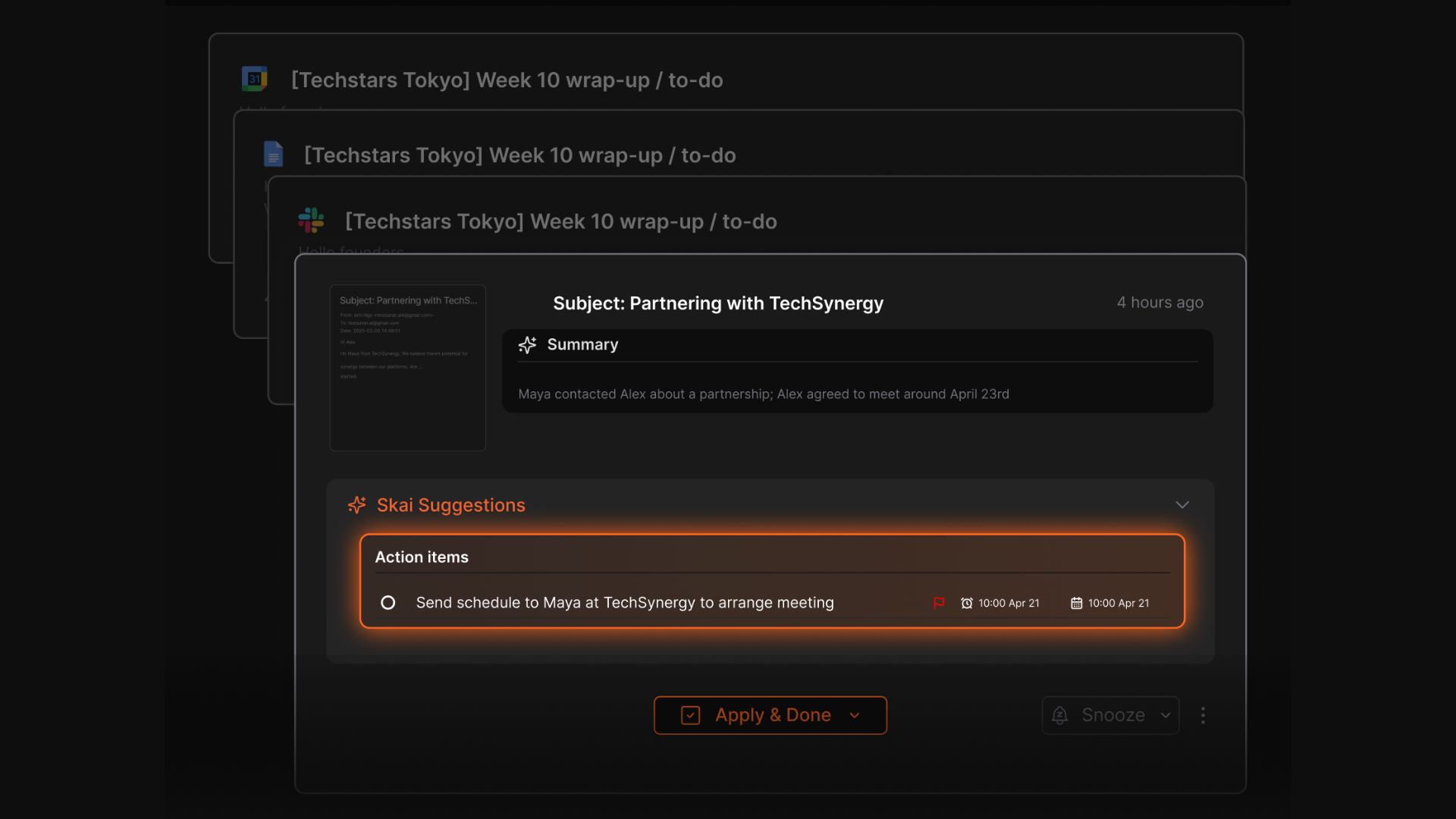
- AI Workspace: Manage notes, tasks, emails, and calendar in one place - no need to switch between apps
- ADHD-Friendly Design: Minimal interface, low-friction input, proactive suggestions to reduce context switching
- Auto-tagging and Organization: Saner auto-categorizes your notes and tasks without you needing to manage folders
- Multi-Source Import: Bring in notes from Evernote, Apple Notes, Google Docs, and more
What I liked
- Feels like a real assistant - it’ll turn my messy thoughts into a clean task list with deadlines
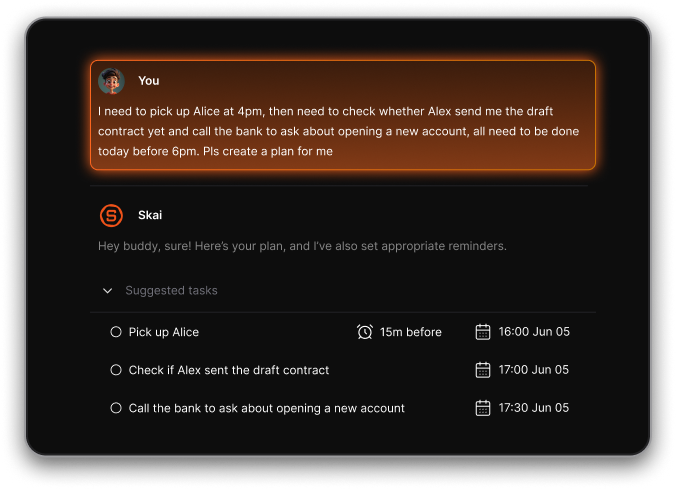
- It finds information across my notes, documents, and emails instantly - even things I forgot I wrote
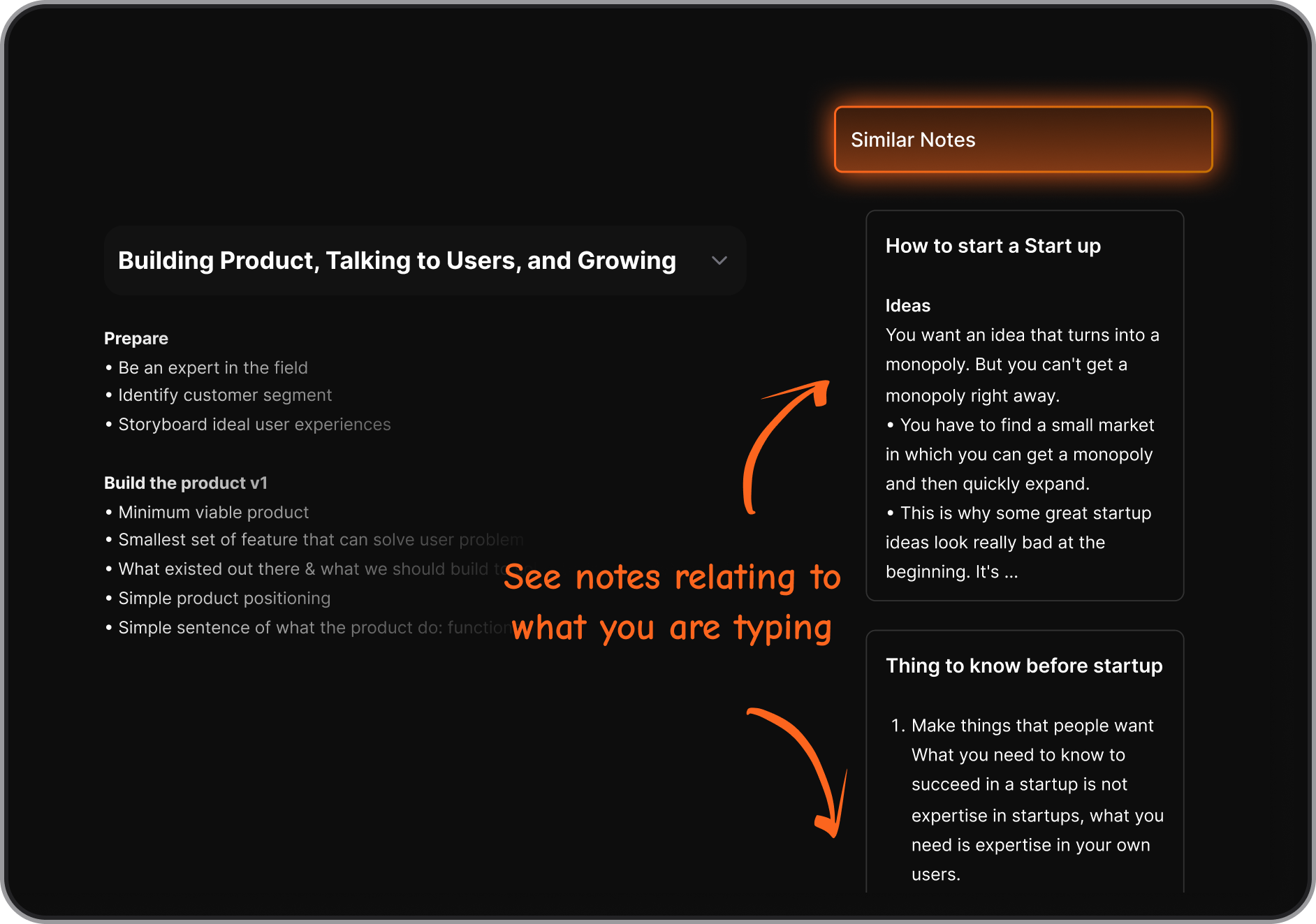
- The AI proactively suggests what to focus on each morning - it feels like having an actual assistant who understands my work
Cons
- Not ideal for large teams or project timelines - no Gantt charts or complex task dependencies.
Pricing
- Free
- Starter: Monthly at $8/month, Annually at $6/month (with early user discount)
- Standard: Monthly at $16/month, Annually at $12/month (with early user discount)
Suitable for
- Professionals, entrepreneurs, and ADHD individuals who want an all-in-one workspace with an AI that actually helps you plan, prioritize, and stay on track. Especially great if you’re juggling a lot of information across tools and are tired of manually organizing everything.
Saner.AI review

Why Saner.AI is one of the best work apps in 2025
- Because Saner.ai doesn’t just help you do work - it helps you figure out what matters most and keeps you from drowning in scattered info.
- Unlike traditional to-do lists or note apps, Saner actually understands what you’ve written and helps you turn it into action. That’s a game-changer - especially for anyone who struggles with focus, prioritization, or mental load.
How to start
- Just head to saner.ai, create a free account, and start syncing your notes, tasks, and emails. Let the AI assist you from there.
Stay on top of your work effortlessly
2. ChatGPT
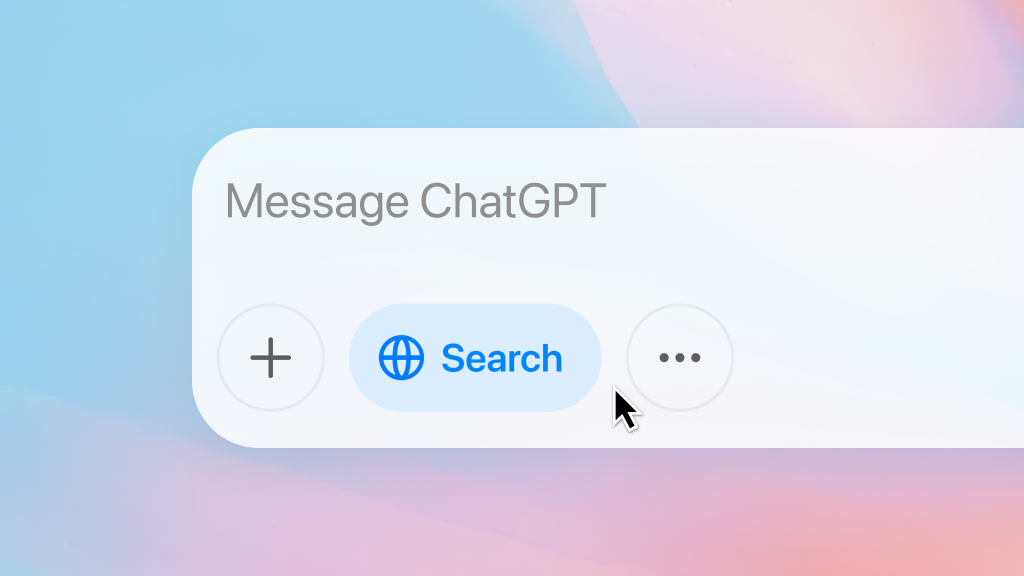
ChatGPT is an AI assistant built by OpenAI that helps you write, plan, brainstorm, code, and summarize anything
It’s like having a knowledgeable coworker on call 24/7, one who never gets tired of helping you draft emails, fix bugs, or clarify complex ideas.
Key Features
- Multi-skill Assistant: Write, edit, summarize, translate, code, or brainstorm—across nearly any topic
- Custom GPTs: Build your own version of ChatGPT with custom instructions, tools, and personality
- File & Image Understanding: Upload PDFs, images, docs, and ask questions about them
- Web Browsing (Pro only): Get current, real-time information from the internet
What I liked
- The voice mode on mobile is surprisingly good
- Deep research saves hours of research
- The image creation is really impressive
What I disliked
- The free version can feel limited - no memory, no custom GPTs, no internet access.
- Sometimes it sounds confident even when it's wrong, which can be misleading if you're not paying close attention.
Pricing
- Free plan available with basic access
- ChatGPT Plus plan at $20/month for access to GPT-4o, Deep Research, and Agents
Suitable for
- Anyone who writes, researches, learns, manages projects, or just wants to offload mental load to an AI. Especially helpful for professionals, students, content creators, solopreneurs, and developers.
How to start
- Go to chat.openai.com, log in with your email, and start chatting. Upgrade to Plus if you need more power or features.
ChatGPT Review (source)

3. Canva
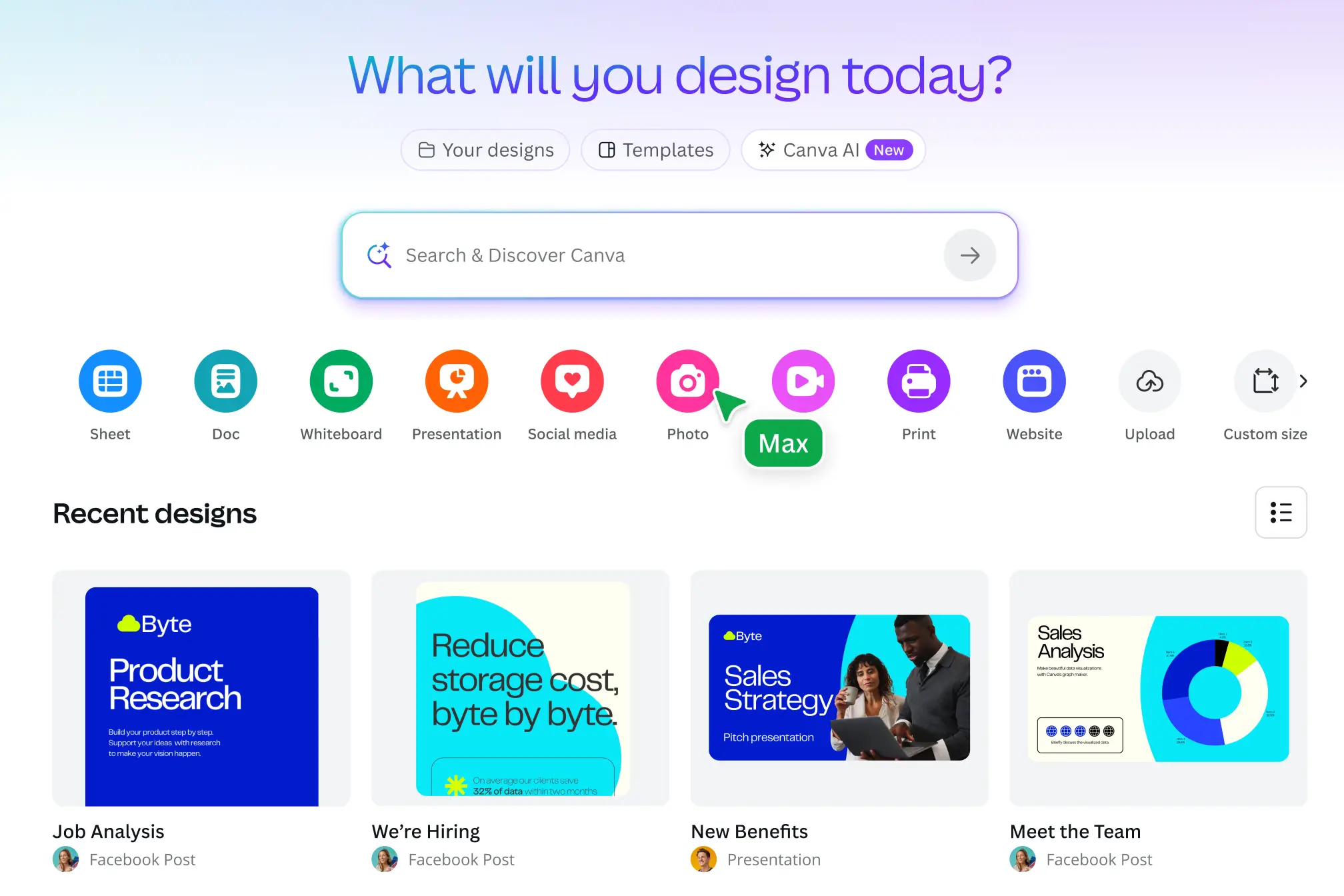
Canva is a versatile online design and visual collaboration platform that helps individuals and teams create polished graphics, documents, videos, and presentations - all without needing advanced design skills. It’s packed with drag-and-drop simplicity, smart templates, and AI-powered tools that speed up creative workflows
Pros:
- Drag-and-Drop Editor: Simple interface that makes it easy to move, resize, and customize elements
- Thousands of Templates: Professionally designed templates for presentations, social posts, posters, and more
- Stock Library: Access to free and premium photos, icons, illustrations, and videos
- Brand Kit: Upload logos, set brand fonts and colors to keep everything consistent
Cons:
- Some of the best templates and elements are locked behind the paid plan
- Limited customization compared to professional tools like Adobe Illustrator
- Offline access isn’t available - everything depends on an internet connection
Pricing
- Free plan available
- Canva Pro: $12.99/month or $119.99/year
- Canva for Teams: $14.99/user/month
Suitable for
- Content creators, marketers, educators, and small business owners who need to produce high-quality designs without relying on professional software or hiring a designer.
How to start
- Go to canva.com, create a free account, and start by customizing a template.
Canva review (source)

4. Calendly

Calendly is a smart scheduling assistant that removes the headache of back-and-forth emails. Just send a link, and people can book meetings with you instantly - based on your real-time availability
Key features
- Calendar Sync: Connects with Google, Outlook, Office 365, and Apple calendars to avoid double-bookings
- Custom Event Types: Set up one-on-one, group, collective, or round-robin meeting types
- Automated Workflows: Send email/text reminders, follow-ups, and post-meeting messages automatically
- Integrations: Works with Zoom, Google Meet, Microsoft Teams, Stripe, PayPal, HubSpot, Salesforce, Zapier, and more
What I liked
- Booking meetings is stupidly easy - just send a link and let Calendly handle time zones and availability
- The free version actually works well if you just need a simple scheduling page

What I disliked
- You only get basic branding and limited event types on the free plan, which means teams will likely need to upgrade
Pricing
- Free plan available
- Standard plan: $10/user/month
- Teams plan: $16/user/month
Suitable for
- Freelancers, entrepreneurs, sales teams, recruiters, and anyone who books a lot of meetings
How to start
- Just head to calendly.com, create a free account, connect your calendar, and you’re ready to share your first scheduling link.
Calendly review (source)

5. Google sheet - Plan, CRM

Google Sheets is more than just a spreadsheet - it’s a collaborative workspace for organizing data, tracking projects, and automating everyday workflows. It lives in the cloud, supports real-time collaboration, and plays well with your other work tools.
Key features
- Real-Time Collaboration: Multiple people can edit simultaneously with live updates
- Smart Autofill + Suggestions: Built-in AI recommends formulas, charts, and trends
- Templates: Prebuilt formats for budgets, project plans, reports, and more
What I liked
- It’s fast to launch and super intuitive—even non-technical teammates can get started quickly
- Collaboration is smooth with no version control issues; comments and suggestions keep things tidy
- Smart suggestions save time on formulas and charts

What I disliked
- Large datasets (10,000+ rows with scripts) can slow it down noticeably
- AppScript is powerful but hard to use unless you know JavaScript
Pricing
- Free plan available with any Google account
Suitable for
- Professionals, analysts, marketers, and teams who want a fast, free, and collaborative way to manage data and tasks without relying on Excel.
How to start
- Just sign in with your Gmail, open a new sheet, and start building. Templates make it even easier to get going.
Google Sheets review (source)

6. v0

v0.app is an agentic AI builder by Vercel that turns your plain-English ideas into functional React apps—complete with UI, backend scaffolding, and deployment hooks. Just describe what you want, and v0 handles the planning, design, and coding behind the scenes.
Key features
- Agentic Prompt-to-App: Plans and builds full apps from a single prompt
- Web-Aware: Can search, inspect, debug, and cite sources in real time
- End-to-End UI Builder: Generates responsive frontends with React and Tailwind
- Deployment-Ready: Exports clean code and connects directly with Vercel
What I liked
- You can go from idea to working prototype incredibly fast - just one prompt and you're off
- It generates clean, developer-friendly React code with Tailwind and shadcn/ui
- Great for non-devs too - PMs and founders can create serious MVPs without writing code
What I disliked
- The credit-based pricing system can be confusing and expensive if you’re building often
- It doesn’t handle backend logic, databases, or full-stack deployment out of the box
- There’s a learning curve around how credits are calculated and how fast they run out
Pricing
- Free plan: $0/month with $5 in monthly credits
- Premium plan: $20/month with $20 credits, plus larger prompts and Figma/API support
- Team plan: $30/user/month with shared credits and collaboration features
Suitable for
- First-time founders, indie hackers, designers, and product managers who want to move fast, validate ideas, and ship usable apps without hiring engineers or learning full-stack development.
How to start
- PMs, startup founders, UI designers, or devs looking to quickly prototype apps and export production-ready frontend code—without wasting hours on scaffolding or boilerplate.
7. Superhuman

Superhuman is a premium email client built for speed, focus, and keyboard-powered productivity. It reimagines the email experience with blazing-fast shortcuts, AI-powered replies, and smart triage tools - turning your inbox from a time drain into a streamlined workspace.
Key features
- AI Summarize + Write: Instantly summarizes long email threads and helps you write faster with GPT-style suggestions
- Split Inbox & Triage: Prioritize important messages and clear clutter without losing focus
- Undo Send & Remind Me Later: Take back accidental sends or snooze emails until the right time
- Insights: See when your email is opened, how often, and by whom
- Superhuman Command: Use powerful keyboard shortcuts to fly through tasks without touching your mouse
What I liked

- It's super fast
- Keyboard shortcuts save a ton of time
- I also liked how easy it is to clear your inbox using “Split Inbox” and reminders. It helps reduce that never-ending email anxiety.
What I disliked
- It’s desktop-first. The mobile app exists, but the full experience is really best on Mac.
- Not ideal if you only check email a few times a day
- The email doesn't link to your to-do list
Pricing
- Standard plan: $30/user/month
- Discounted to $25/month with annual billing
- No free trial or free tier
Suitable for
- Executives, founders, operators, and anyone who spends hours in email and wants to save time, reduce cognitive load, and move through messages effortlessly.
How to start
- Go to superhuman.com, join the waitlist or request access, and go through a short onboarding call to customize the experience to your workflow.
Superhuman Review (source)

8. Fathom

Fathom is a smart AI meeting assistant that records, transcribes, and summarizes your Zoom, Google Meet, or Microsoft Teams calls - so you can focus on the conversation instead of scribbling notes.
Key features
- Instant recording and transcription for meetings (Zoom, Google Meet, Teams)
- AI-generated summaries with highlights, action items, and email follow-ups
- “Ask Fathom” lets you ask questions about past meetings
- Integrates with tools like Slack, Salesforce, HubSpot, Notion, Google Docs, Gmail, Asana, and more
- SOC 2 Type II compliant with end-to-end encryption
What I liked
- Clean, automatic transcription and summaries delivered within seconds of the meeting ending
- Very generous free plan with unlimited recordings and transcripts
- Easy to create and share meeting clips or highlight playlists with your team
What I disliked
- Only the first five meetings each month include full AI-generated summaries on the free plan
- No dedicated mobile app as of mid-2025, which limits on-the-go access
- Not designed for managing complex projects, tasks, or timelines—purely focused on meeting capture and follow-up
Pricing
- Free: Unlimited recordings and transcripts, 5 smart summaries/month
- Premium: $15–19 per user/month for unlimited summaries, action items, Ask Fathom, global search
- Team: $19–29 per user/month with shared folders, keyword alerts, and collaboration tools
- Team Pro: $29–39 per user/month with SSO, advanced permissions, and coaching analytics
Suitable for
- Professionals, coaches, sales teams, and small to mid-sized companies who want to stay present in meetings while Fathom handles the note-taking, action items, and follow-up.
How to start
- Go to fathom.video, create a free account, and connect your calendar to start recording meetings automatically.
Fathom review (source)

9. Manus

Manus.im is an autonomous AI agent that turns your ideas into real results. Unlike traditional tools or chatbots, it doesn’t just reply - it executes tasks for you, end-to-end
Key features
- Autonomous Task Execution: Plans and completes tasks like writing, coding, designing, and researching without step-by-step prompts
- Multi-Modal Capabilities: Works across formats—text, images, code, slides, audio
- Playbook Templates: One-click workflows for websites, research, presentations, trip planning, video generation, and more
- Real-Time & Cloud Processing: Runs in the background, even when your browser is closed
What I liked

- Handles complex tasks from start to finish without needing micro-management
- Playbooks are a great shortcut for common tasks like building decks or summarizing reports
What I disliked
- Occasionally struggles with multi-step reasoning or building on earlier outputs
- Still in early stages, so you might hit rough edges or bugs
- No task management support
Pricing
- Free plan includes unlimited chat
- Paid plan at 20$/month
Suitable for
- Professionals and small teams looking for an AI that executes - not just assists. Especially useful if you work on content, research, design, or tech and want one place to get it all done faster.
How to start
- Go to manus.im, then write prompts to start automating tasks across your workflow.
10. Napkin

Napkin.ai is a visual AI tool that helps you turn written ideas into ready-to-use visuals.
Just type or paste your text, and Napkin instantly transforms it into infographics, flowcharts, diagrams, or slide decks - no prompting or design skills needed.
Key features
- Text-to-visual generation: Napkin reads your structured text (like bullet points or outlines) and generates clean, presentation-ready visuals.
- Fully editable visuals: Change colors, icons, connectors, layout, and fonts to match your preferences.
- Multiple export formats: Download your visuals as PPT, PDF, PNG, or SVG.
- Collaboration tools: Shared Teamspaces allow you to invite teammates, co-edit visuals, and leave feedback.
What I liked
- It’s fast - just paste structured notes and get a polished visual in seconds.
- You can export visuals directly into slides or social posts without needing a designer.
- The collaboration features are helpful for teams sharing knowledge or feedback.
What I disliked
- It’s desktop-only, which limits use if you like working on the go.
- You don’t get full creative freedom - great for clarity, not for artistic flexibility.
Pricing
- Free – $0/month: 500 credits/week, exports to PNG/PDF, Napkin branding
- Plus – ~$12/month: 10,000 credits/month, SVG/PPT export, 3 custom styles, brand removal
- Pro – ~$30/month: 30,000 credits/month, unlimited styles, custom fonts, exclusive templates
Suitable for
- Writers, educators, founders, and knowledge workers who want to visualize concepts quickly using structured text and collaborate with others on clear, shareable diagrams and visuals.
How to start
- Just go to napkin.ai on desktop, sign up, paste or write your text, and click generate. You can then edit, export, or collaborate with teammates inside shared Teamspaces.
🚀 Final Thoughts: The Best Work Apps Are the Ones That Work for You
Let’s be real - there’s no perfect work app that fits everyone.
But the right combination of tools can transform how you work:
less mental clutter, fewer tabs, more focus, and way more done.
- If you’re overwhelmed by scattered notes and forgotten tasks, try Saner.AI to turn your brain dump into a plan.
- If scheduling is your pain point, Calendly can save you hours of back-and-forth.
- Need creative flow? Canva, Napkin.ai, and ChatGPT are your new co-pilots.
- Trying to automate the grunt work? Tools like v0 and Manus are built for that.
🧠 Whether you’re a solopreneur, part of a fast-paced team, or someone managing ADHD at work, your app stack should work with your brain - not against it.
Start with one.
See what changes.
Then build a toolset that gives you more control, clarity, and time to focus on what actually matters.
👉 Want a shortcut? Try Saner.AI to pull everything - your tasks, notes, calendar, and brain chaos - into one place. You just chat, and it handles the rest.
Stay on top of your work in mintues
FAQ: Best Work Apps in 2025 (What People Actually Want to Know)
1. What are the best work apps in 2025?
The best work apps help you get more done without adding more clutter. In 2025, that means:
- AI-powered assistance (like Saner.AI and ChatGPT)
- Automation for repetitive tasks (like v0 and Manus)
- Seamless scheduling (like Calendly)
- Collaborative creation (like Canva and Google Sheets)
- Workflow clarity (like Superhuman, Fathom, and Napkin.ai)
Whether you're a solo founder, busy executive, or creative lead, the top tools are those that reduce friction and help you stay in flow.
2. What makes a great work app?
The best work apps today aren’t just useful - they’re usable. Look for tools that offer:
- AI Assistance: Smart suggestions, auto-organization, contextual actions
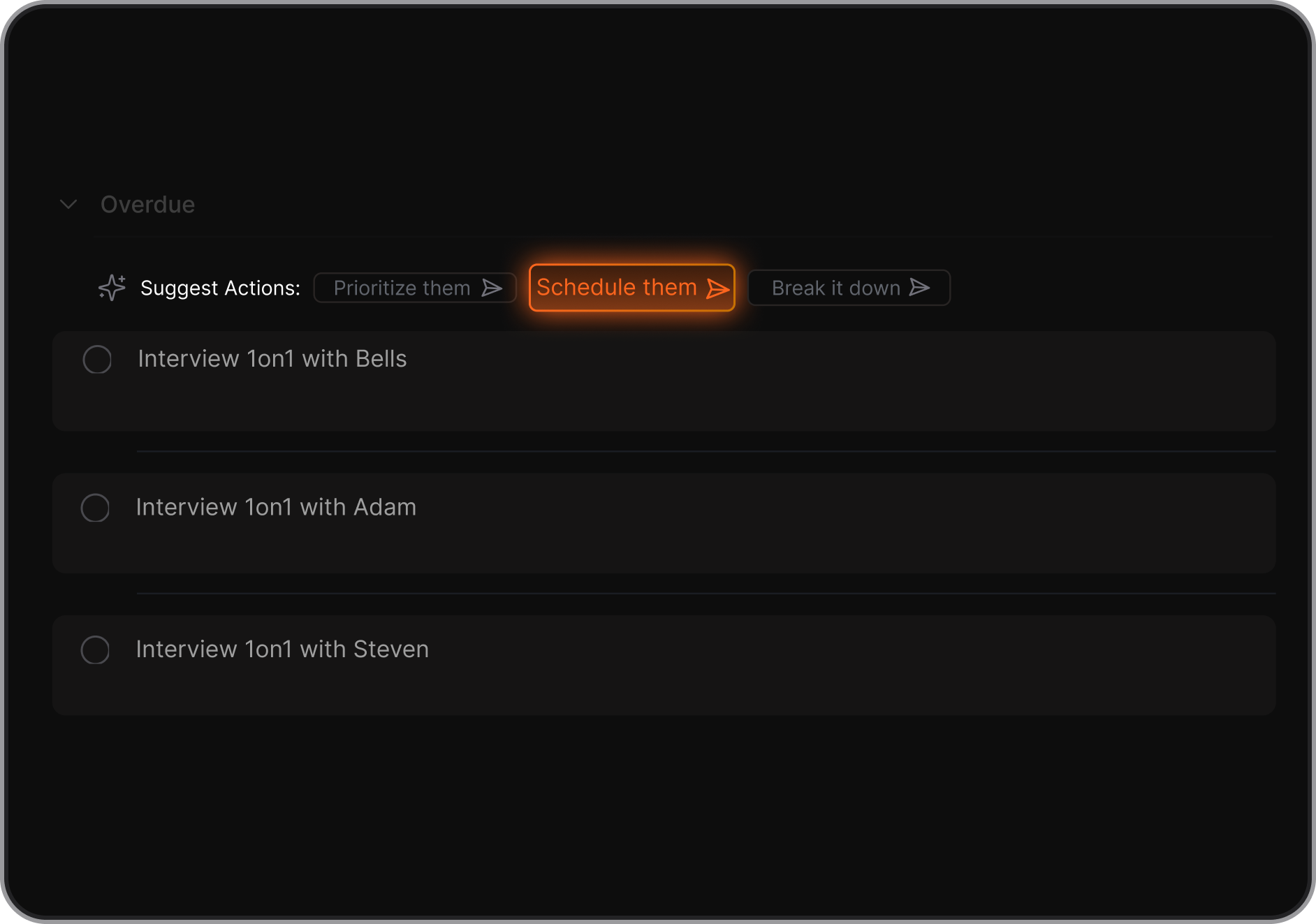
- Ease of Use: Minimal setup, clean interface, fast onboarding
- Integration: Works with your email, calendar, files, and team
- Cross-Platform Access: Mobile, web, desktop—so your work moves with you
- Time-Saving Automations: From task reminders to meeting prep
Tools like Saner.AI, Superhuman, and Manus go beyond features—they actively help you think and work better.
3. Which work apps use AI to boost productivity?
Here are the top AI-powered work apps people love in 2025:
- Saner.AI – Turns your rants into tasks, finds notes with one question, and builds your day plan automatically
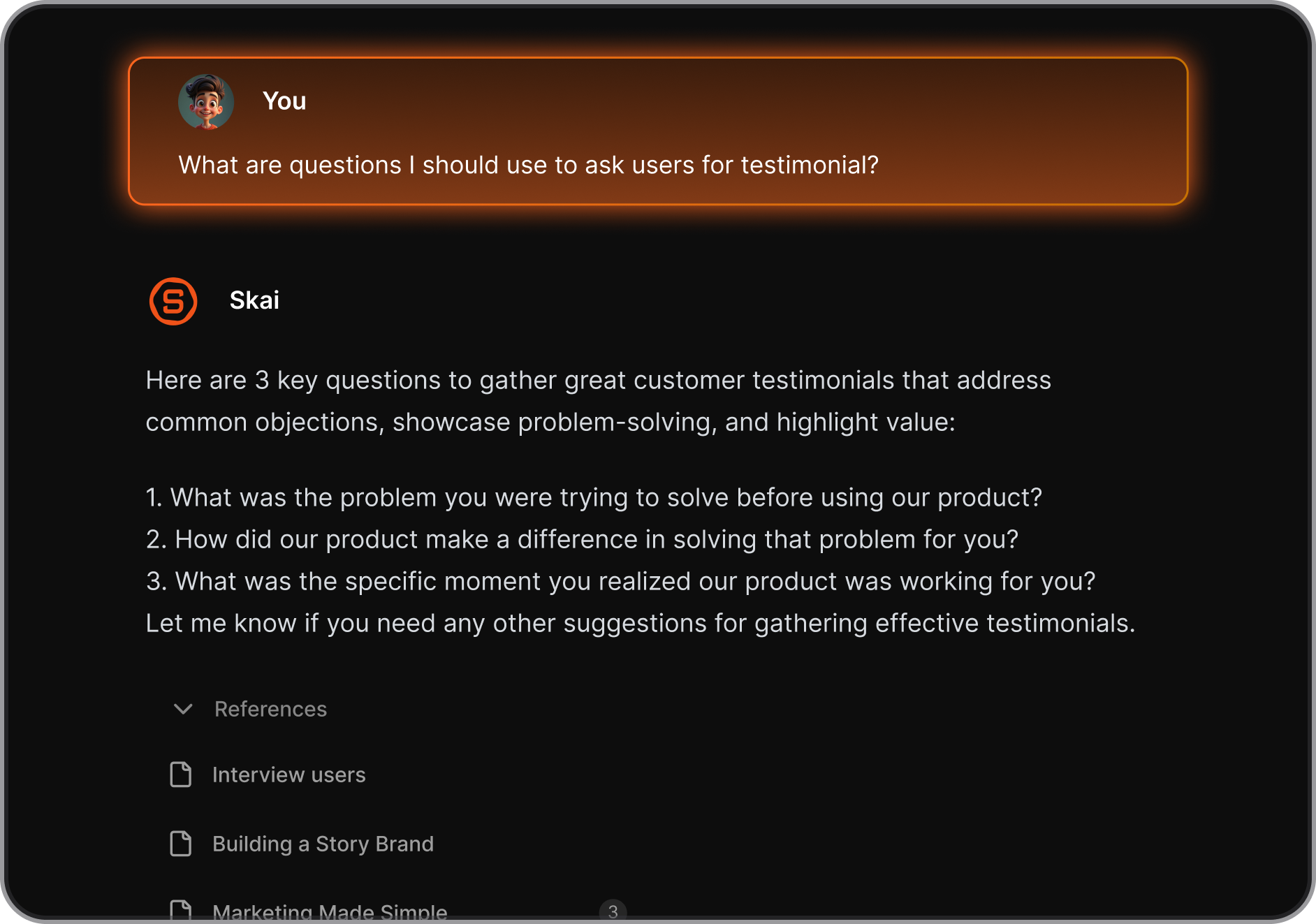
- ChatGPT – Great for writing drafts, summarizing ideas, and brainstorming
- Manus – AI agent that helps with real-time task execution and decision-making
- Fathom – Records, transcribes, and summarizes meetings with instant highlights
- Napkin.ai – Captures stray ideas and connects them into structured insights over time
These aren’t just apps—they're assistants that think with you.
4. What’s the best calendar or scheduling app for work?
Scheduling tools that save time (and your sanity):
- Calendly – Book meetings without the back-and-forth
- Saner.AI – Automatically suggests optimal times for tasks and deep work
In 2025, the best work apps don’t just manage your calendar—they protect your time.
5. Are there work apps that organize everything in one place?
Yes - and they're game changers.
- Saner.AI brings together your notes, tasks, calendar, and even emails. No more scattered apps.
- v0 helps developers ship faster by turning plain text into production-ready code.
- Google Sheets remains the go-to for data collaboration - especially with built-in AI functions now available.
Think of them as your digital HQ.
6. What’s the best work app for ADHD or overwhelmed professionals?
Many apps help you get things done. Saner.AI helps you start.
- You can just talk to it - it turns thoughts into actions
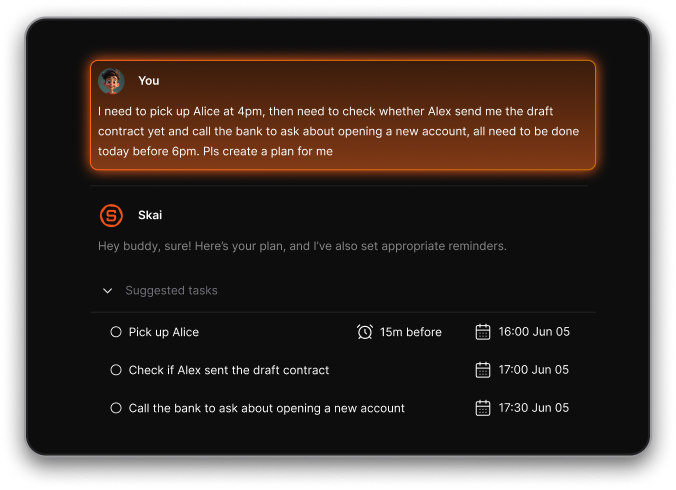
- It reminds you what’s important (without overwhelming you)
- It helps you plan your day without needing to plan
It's one of the few tools built with mental load in mind.
7. Are these apps free?
Several of the best work apps offer free plans:
- Saner.AI – Free for note search, AI reminders, and basic planning
- ChatGPT – Free to use
- Calendly – Free scheduling for individuals
- Canva – Generous free plan for design
- Google Sheets – Free with a Google account
- Napkin.ai – Free tier for personal ideation
You can try most of them without paying a cent.
8. Which apps help with writing, content, and communication?
If your work involves writing, reporting, or creating content:
- ChatGPT – Great for rough drafts, outlines, and ideation
- Superhuman – Streamlined email writing and outreach
- Saner.AI – Helps draft emails, meeting summaries, and task breakdowns from your notes
These tools speed up your workflow without compromising quality.
9. What’s the best work app for meetings?
Tired of writing meeting notes? These apps help:
- Fathom – Transcribes and summarizes meetings automatically
- Saner.AI – Pulls action items and decisions from your notes
Meeting productivity = maximized.
10. Which work apps are best for solo entrepreneurs or founders?
If you're juggling everything yourself:
- Saner.AI – Like a second brain for your tasks, ideas, and deadlines
- v0 – Quickly build products without needing a full dev team
- Manus – Automate the grind with proactive AI assistance
- Canva – DIY design for branding and pitch decks
- Google Sheets – Run your ops, finances, and CRM in one place
These tools help you do more without hiring more.
11. Are there tools that help you think better?
Some apps aren’t just about doing - they help you think clearer:
- Saner.AI – Surfaces relevant notes, breaks down complex tasks, and helps prioritize
- ChatGPT – Gives instant clarity on fuzzy problems or rough ideas
In a world of too much input, these tools support better mental output.

